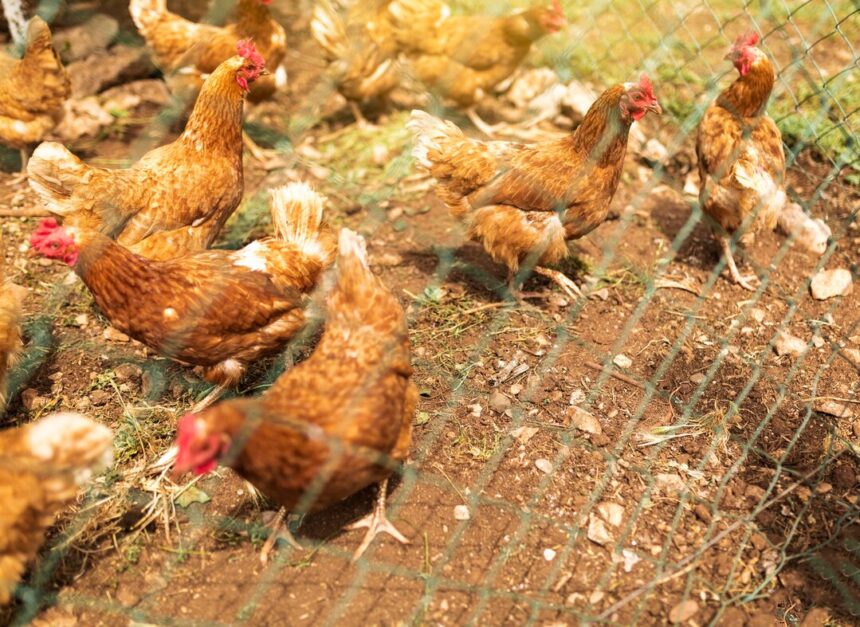Breeding point of lay (POL) chickens is an essential aspect of poultry farming in South Africa, as it ensures a consistent supply of quality laying hens for egg production. Point of lay chickens refers to young hens that are approaching the onset of egg laying, typically between 16 to 20 weeks of age. Breeding POL chickens requires careful selection, management, and preparation to maximize egg production and profitability. In this article, we’ll explore ten essential things you should know about breeding point of lay chickens in South Africa, covering key aspects such as breed selection, housing, nutrition, and health management.
- Breed Selection:
Choosing the right breed of chickens is crucial for successful POL breeding. Consider factors such as egg production rate, temperament, adaptability to local conditions, and disease resistance. Popular POL breeds in South Africa include Hy-Line, Lohmann Brown, and ISA Brown. - Housing Requirements:
Provide suitable housing facilities for POL chickens that offer protection from predators, adverse weather conditions, and excessive heat or cold. Ensure adequate ventilation, lighting, and space per bird to promote health and productivity. - Nutrition and Feeding:
Provide a balanced diet rich in essential nutrients, vitamins, and minerals to support optimal growth and egg production in POL chickens. Feed them a high-quality layer mash or pellet formulated specifically for laying hens, supplemented with fresh water and occasional treats such as vegetables or grains. - Health Management:
Implement a comprehensive health management program to prevent disease outbreaks and ensure the well-being of POL chickens. Vaccinate chicks against common poultry diseases, practice biosecurity measures to minimize the risk of infection, and monitor flock health regularly. - Lighting Management:
Manage lighting conditions to stimulate egg production in POL chickens. Provide 14 to 16 hours of light per day using artificial lighting during the winter months to simulate long daylight hours and encourage consistent egg laying. - Breeding Stock Selection:
Select breeding stock with desirable traits such as high egg production, strong eggshell quality, and good temperament. Choose healthy, well-formed birds with no signs of deformities or genetic defects for breeding purposes. - Flock Management:
Implement proper flock management practices to maintain the health and productivity of POL chickens. Monitor flock behavior, address any signs of aggression or stress, and separate aggressive or sick birds from the rest of the flock. - Egg Collection and Handling:
Collect eggs regularly to prevent breakage, contamination, and loss of quality. Handle eggs carefully, avoiding sudden movements or rough handling that could damage the eggshell or compromise egg quality. - Egg Quality Control:
Monitor egg quality parameters such as shell integrity, size, color, and cleanliness to ensure high-quality eggs for sale. Implement quality control measures to identify and remove any defective or substandard eggs from the production line. - Marketing and Sales:
Develop a marketing strategy to promote and sell POL chickens and their eggs to local customers, retailers, or commercial egg producers. Advertise your products through online platforms, social media channels, or local marketplaces to reach potential buyers and expand your customer base.
Breeding point of lay chickens requires careful planning, management, and attention to detail to ensure successful egg production and profitability. By following the ten essential tips outlined in this article, poultry farmers in South Africa can maximize the productivity and efficiency of their POL breeding operations, leading to a consistent supply of quality laying hens and eggs for the market. Remember to prioritize the health and welfare of the birds, maintain high standards of hygiene and biosecurity, and continuously strive for improvement and innovation in your breeding practices.
Join 'Farmers Mag' WhatsApp Channel
Get the latest Farming news and tips delivered straight to your WhatsApp
CLICK HERE TO JOIN






